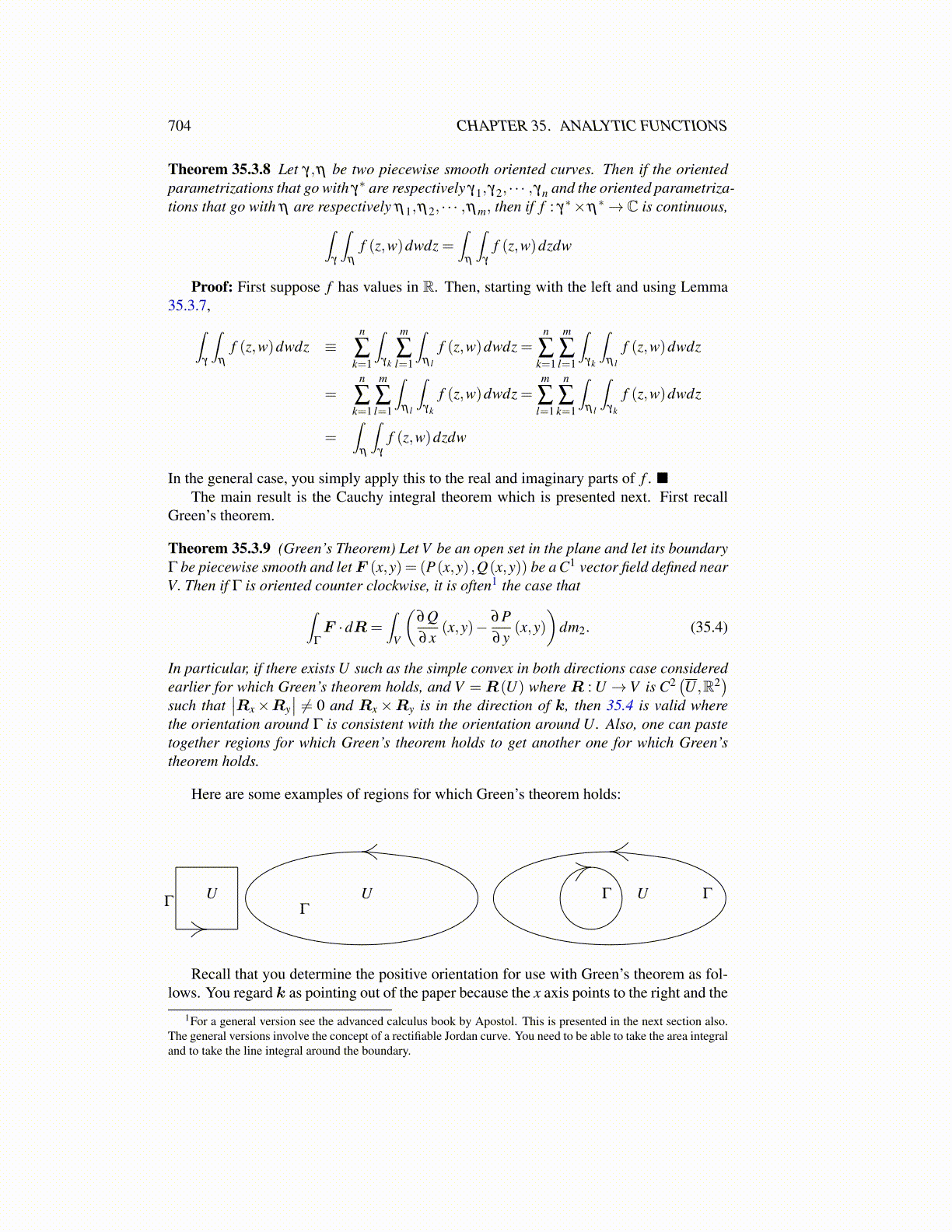
704 CHAPTER 35. ANALYTIC FUNCTIONS
Theorem 35.3.8 Let γ,η be two piecewise smooth oriented curves. Then if the orientedparametrizations that go with γ∗ are respectively γ1,γ2, · · · ,γn and the oriented parametriza-tions that go with η are respectively η1,η2, · · · ,ηm, then if f : γ∗×η∗→C is continuous,∫
γ
∫η
f (z,w)dwdz =∫
η
∫γ
f (z,w)dzdw
Proof: First suppose f has values in R. Then, starting with the left and using Lemma35.3.7,∫
γ
∫η
f (z,w)dwdz ≡n
∑k=1
∫γk
m
∑l=1
∫η l
f (z,w)dwdz =n
∑k=1
m
∑l=1
∫γk
∫η l
f (z,w)dwdz
=n
∑k=1
m
∑l=1
∫η l
∫γk
f (z,w)dwdz =m
∑l=1
n
∑k=1
∫η l
∫γk
f (z,w)dwdz
=∫
η
∫γ
f (z,w)dzdw
In the general case, you simply apply this to the real and imaginary parts of f . ■The main result is the Cauchy integral theorem which is presented next. First recall
Green’s theorem.
Theorem 35.3.9 (Green’s Theorem) Let V be an open set in the plane and let its boundaryΓ be piecewise smooth and let F (x,y) = (P(x,y) ,Q(x,y)) be a C1 vector field defined nearV. Then if Γ is oriented counter clockwise, it is often1 the case that∫
Γ
F ·dR=∫
V
(∂Q∂x
(x,y)− ∂P∂y
(x,y))
dm2. (35.4)
In particular, if there exists U such as the simple convex in both directions case consideredearlier for which Green’s theorem holds, and V =R(U) where R : U → V is C2
(U ,R2
)such that
∣∣Rx×Ry∣∣ ̸= 0 and Rx×Ry is in the direction of k, then 35.4 is valid where
the orientation around Γ is consistent with the orientation around U. Also, one can pastetogether regions for which Green’s theorem holds to get another one for which Green’stheorem holds.
Here are some examples of regions for which Green’s theorem holds:
UΓ
UΓ
Γ U Γ
Recall that you determine the positive orientation for use with Green’s theorem as fol-lows. You regard k as pointing out of the paper because the x axis points to the right and the
1For a general version see the advanced calculus book by Apostol. This is presented in the next section also.The general versions involve the concept of a rectifiable Jordan curve. You need to be able to take the area integraland to take the line integral around the boundary.